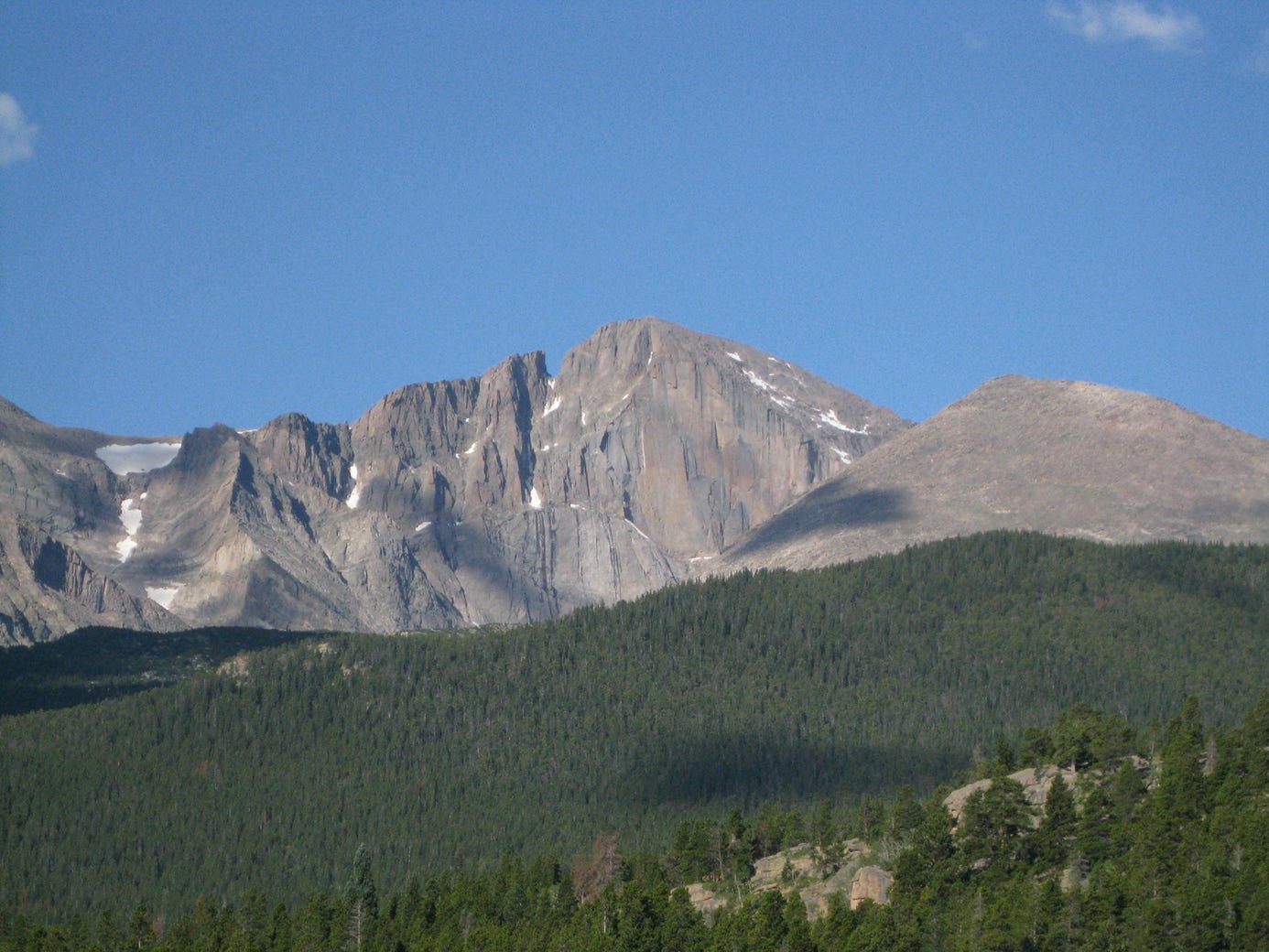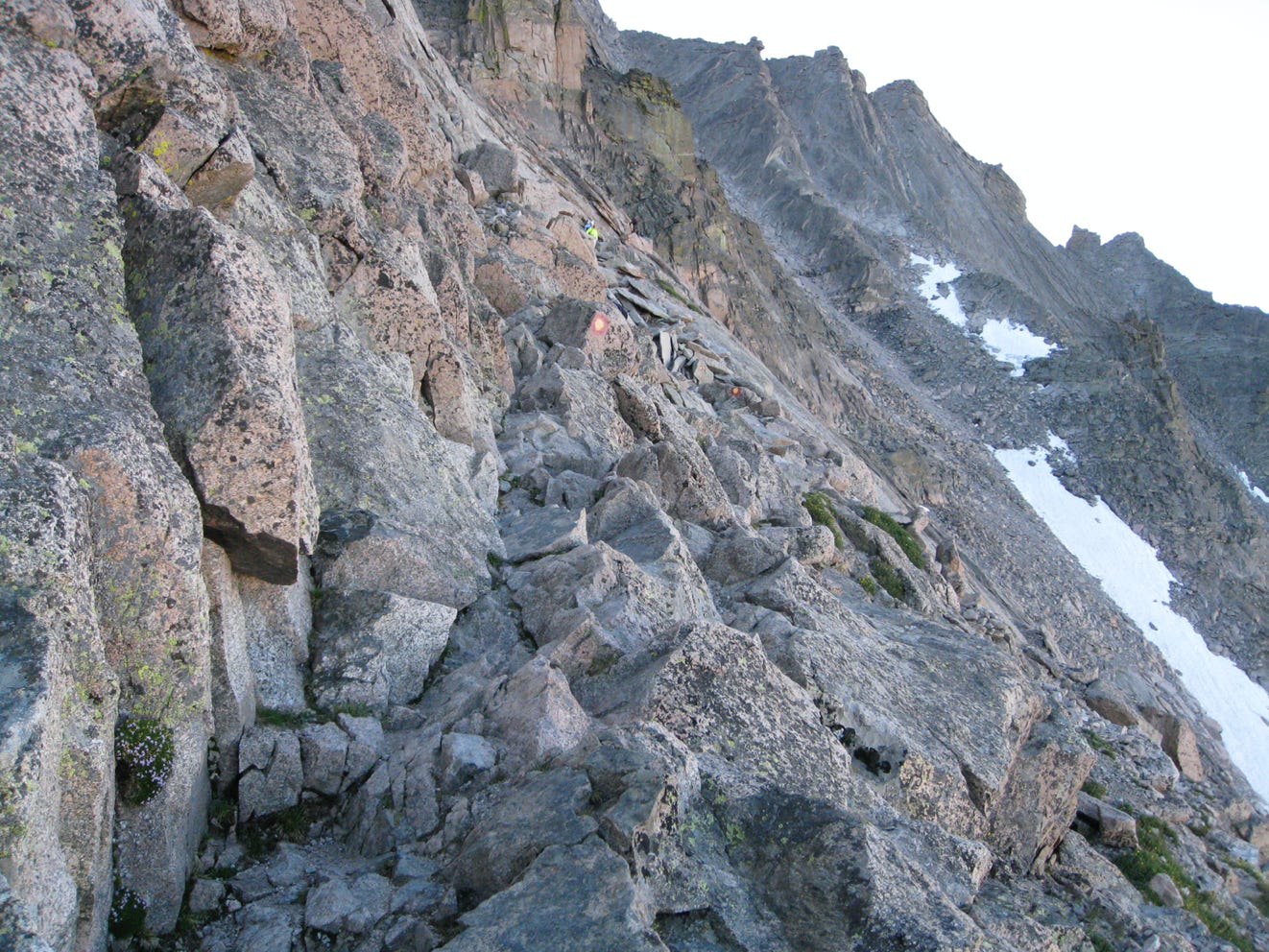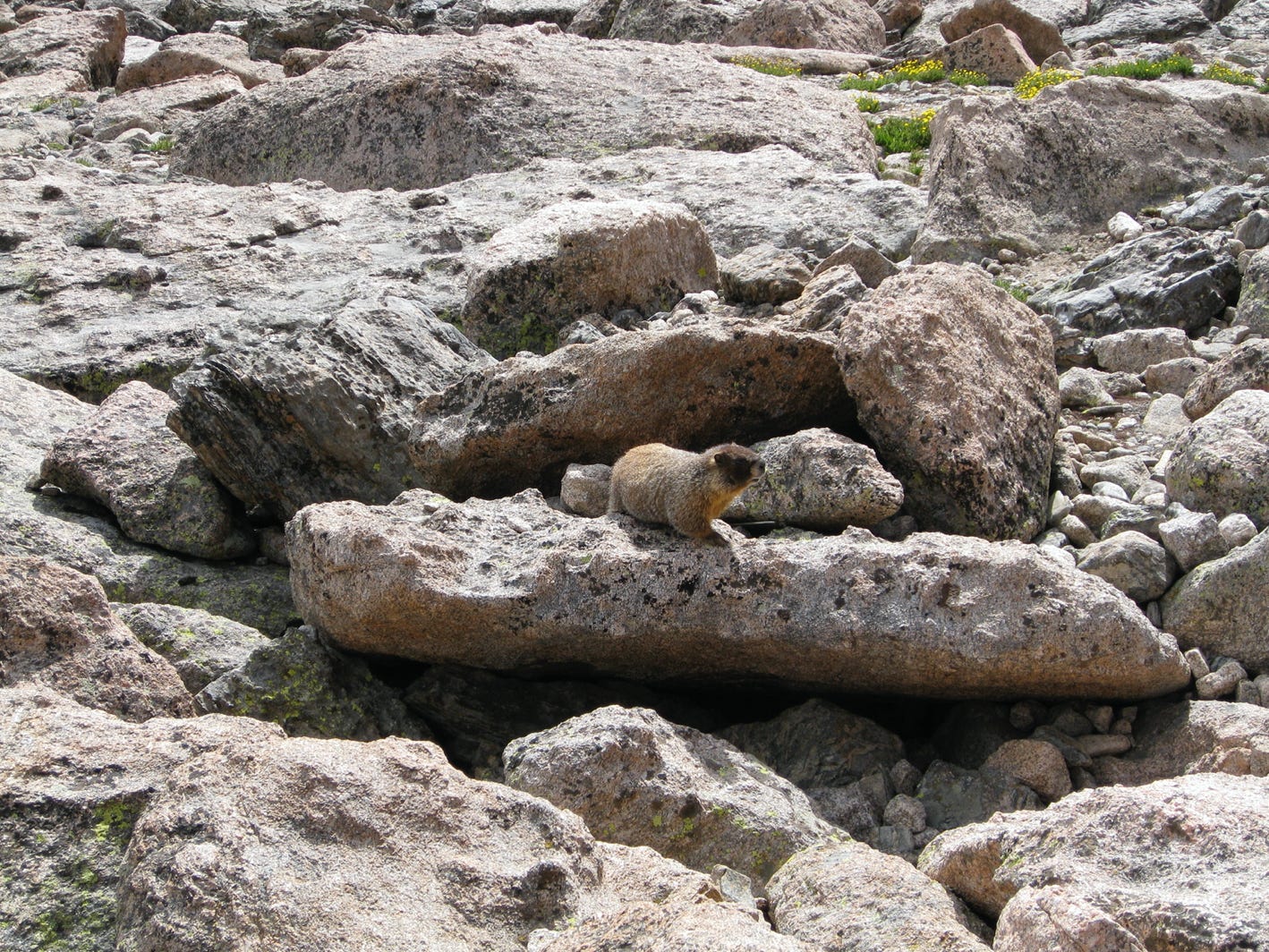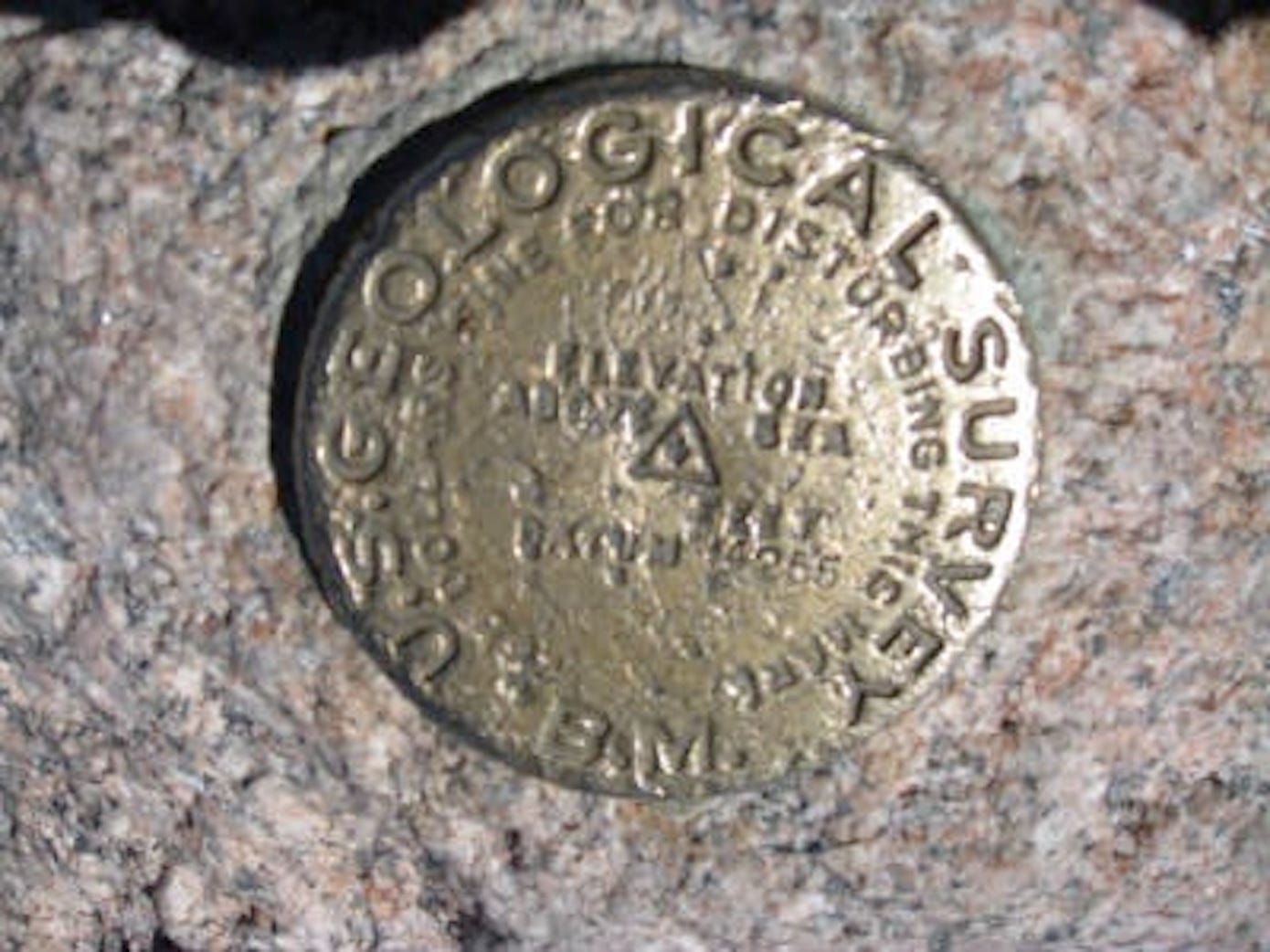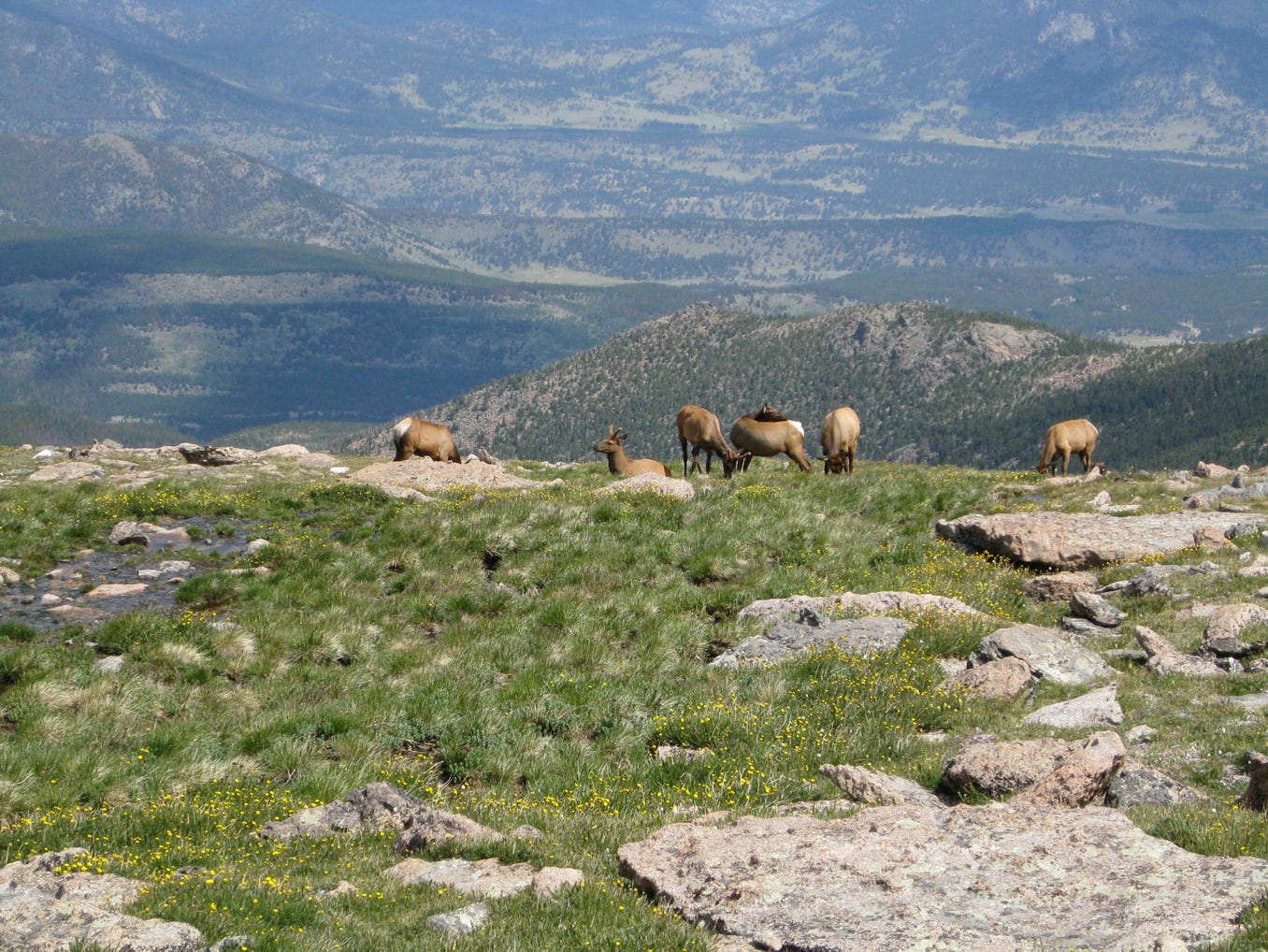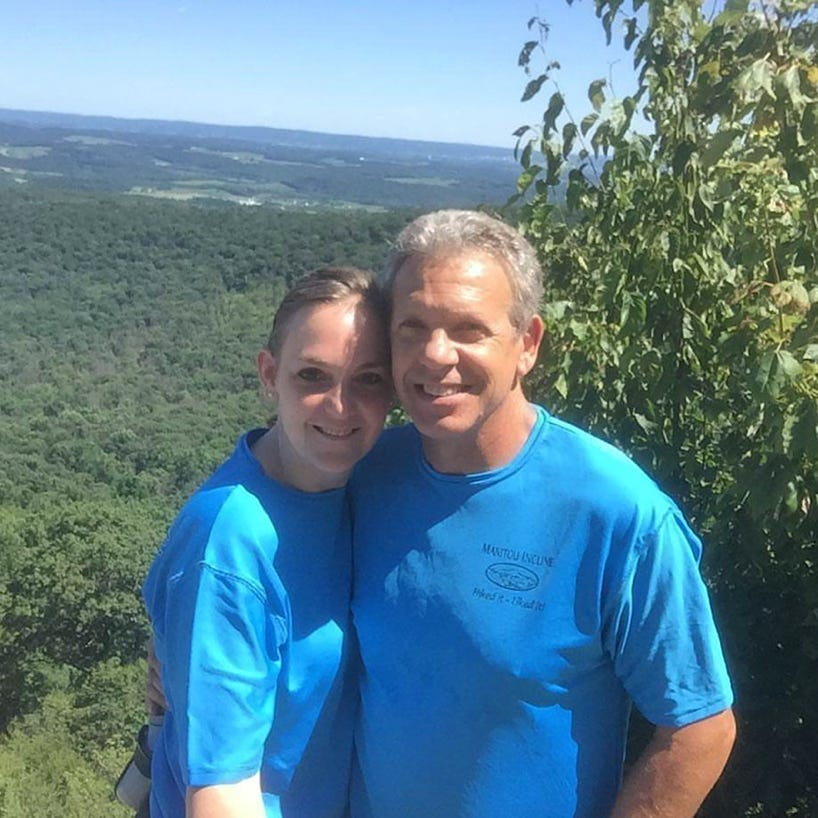
Longs Peak
July 31, 2008
This is what I planned to do and the most difficult focus of my trip. Longs Peak is a big mountain to conquer and a beautiful sight indeed. I increased my regular training, did my Internet research and have now spent a week and a half in Colorado hiking and acclimating. If I’m going to do it, Lord, help me to do it now.
I awaken early at 12:30 am and depart for Longs Peak at 2 am. It is 2:30 am when I anxiously arrive at the trailhead. That is a little latter than I had planned, but I'm still in good shape. I signed the register and am ready to go.
Many people reading this may think that this is an early start for a hike, but when it comes to hiking Longs Peak, you must start very early so that you can leave the summit by noon. Thunderstorms are to be expected anytime in the afternoon hours, so you definitely want to get to the peak and then back down below tree level before problems arise. It is also a long, sixteen mile, round trip.
What an incredibly beautiful morning it was. So many stars were visible due to the lack of light pollution. Hikers spent time in the parking lot just gazing at the heavens. I am by no means alone in the parking lot. I see at least five other groups preparing to hike.
I start with a steady pace in the cool morning air. Due to asthma, I start gradually and work my wy up to a stiff pace. The head-lamp lights my way a I wind up the miles of trail through the forest.
Finally, at approximately 11,500 feet, and above the tree line, we begin to see a beautiful sun rise. It’s worth taking time for a stop to take in the beauty and click off a few pictures.
I thank God that the training, and that my time in Colorado have worked to acclimate me fairly well to elevation. As a person born partially crippled, having had back surgery and also asthmatic, I am very thankful that my conditioning and breathing are going extremely well. Since I live at only 540 feet in Eastern PA my training needed to be quite serious. Thank God for fitness.
At approximately 12,000 feet, with the Boulder Field immediately ahead, other climbers and I consider the risks of the remaining climb. I see climbers beginning to suffer acute mountain sickness and early dehydration. Several climbers share well-wishes as you are never truly alone on Longs Peak. Several dozen climbers were spread throughout the mountain. My speed now increases dramatically. I feel surprisingly good.
Ahead is the Boulder Field. The Boulder Field is a mile long, moderately steep and challenging. These are not small rocks. The boulders range in size from the size of a large TV to large pickup truck. It is actually quite fun moving through it as the sun rises behind me. My goal is the Keyhole. The Keyhole is an obvious rock formation at the end of the Boulder Field near 13,000 feet. Hiking gets quite steep and challenging moving up to the Keyhole. Several people huddled there resting there. They have called it a day, as many hikers do at this point.
Wow! You imagine the backside of the mountain being more challenging, but what you see after the Keyhole is an eye opener. You feel like you are on the edge of the world.
I enter an area called the Ledges and am now quite exposed. I traverse the mountain carefully on a narrow trail ranging from inches to a foot and a half in width, with a steep angle dropping downward on my right. Hiking requires considerable care while you are climbing, crawling and scrambling without the aid of ropes. This is better done with a small group as I quickly found. My horizontal movement across the mountain is only the beginning of the challenging work. Unfortunately, I must also give up over 100 feet of vertical before I leave this area.
Next comes the Trough. The Trough is a long vertical chute of rocks climbing what appears to be 700 to 800 feet. I am now moving with a small group of new friends. You do not want to climb the backside of Longs Peek without friends to help you move from point to point. This is steep (easily greater than a double black ski slope) and moving requires care. You also need frequent breaks to catch your breath. Small groups seem to move in unison about ten to fifteen yards at a time. You then stop, breathe and discuss the next direction.
Finally, you reach what appears to be the top, but it is merely the top of the Trough. Exiting the top of the Trough is even more difficult than anything we have climbed so far today. Emerging from the Trough requires considerable care as you are now scaling large rock in a relatively technical fashion. Many hikers do not move beyond this point.
Just when you expect something to become easier, you now enter the Narrows. The Narrows is exactly what the word implies. To your right you will find a very steep sheer rock face falling off for several hundred feet. Your goal is to move across those narrow ledges very carefully traversing toward the Homestretch. You must go slowly and move with your hiking partners because a wrong step could be disastrous. If you are suffering any acute mountain sickness problems at this point you should seriously consider turning back. This is not a good place to be lightheaded.
After the Narrows, I reached the Homestretch. You take a rest, look up and hear an almost orchestrated groan. Again, some people will turn back at this point. The Homestretch resembles a granite wall that it is a very steep with a narrow vertical chute. The Homestretch appears even steeper than the Trough and includes many large rock slabs with fewer obvious stepping points made by the smaller rocks. You and your partners will move 5-10 yards and then stop to breathe. It is quite interesting how that no one complains of a slow pace during the Homestretch. It is also interesting to watch how the small groups move in unison. Amazed, I see a teenage girl and her father are climbing together on the Homestretch. Tough kid. Way to go.
Summit! I did it! Longs Peek is 14, 259 and I had to work for every difficult step. It is a bit scary, but great fun even though it will kick your butt. I turn to see a single file group of other hikers emerging onto the Summit. For each hiker we hear applause and a hearty Yahoo! Then hikers find their rock on this very broad summit and crash down.
This is beautiful. God, thank you for every step. Thank you for your protection, that I was able to accomplish this and for this marvelous beauty You have created.
We spend about thirty minutes chatting and taking pictures. Cell phone calls are being made left and right. I probably called four people to tell them I made the Summit. But ultimately we must go down. We don’t relish this idea because one look at the downwards route appears considerably more difficult that we would like. It may be harder going down. A couple of us begin down and quickly we see a mass exodus of about twenty to twenty-five people follow from the Summit.
We all know it is much safer and more interesting to move down in a group than to go solo. You need people around you to assist you to the next foothold or handhold. It is a slow process. We also realize that at anytime we could see the next group of people headed upward. We would like to get off the Homestretch and Narrows before a long single file crowd impedes us.
I watch how so many who did not know each other just a few hours ago are now working together like close friends. You move down seated on your butt for most of the downward root. That is the only safe way to move from rock to rock. We move through the Homestretch across the Narrows, very carefully down the Trough and across those final Ledges toward the Keyhole. The return trip might not be as fatiguing but it requires just as much attention due to the same dangers that we found on the way up this mountain. And, that long downhill can very hard on your knees.
This time going through the Keyhole and the Boulder Field carries with it a considerable sense of achievement. What an amazing sight it was to see a herd of at least fifteen elk just below the Boulder Field.
The total hiking time for most people who have planned well and have conditioned themselves will be about twelve to fourteen hours. You will use more than two liters of water. Altitude requires more water. I carried three liters of water. And since weather conditions are variable, you will carry extra non-cotton clothing for higher elevations. I wore hiking pants, a polyester T-shirt and a long sleeve zip-top.
I have now done five 14,000 feet mountains in nine days and I just turned fifty years old yesterday. Happy birthday me. It was fantastic. Longs Peek was exhilarating. My philosophy is that every one should see the world from the top of a mountain. A beautiful view like this can change a person. That would sure make for less crime. This is very beautiful and well worth the extreme effort.
Longs Peak
July 2009
Climbing Longs Peak was so great that I had to go back and do it again. Longs Peak is one great mountain. I guess it is my favorite mountain memory.
In July, 2009, I travel back to Estes Park and for my pilgrimage. This year again, I came alone; but you are never really alone when climbing in Colorado. The people are good, and they are willing to join with solo climbers. Actually, I met several other solo climbers the morning I started.
My climb started at 2:00 AM, with a summit at 7:30. Movement was very strong up to the Keyhole. As always, the climbing slowed significantly after the Keyhole. I returned to the trailhead at 1 PM, but that includes moving slower going down than moving upward. It saves the knees. This mountain gives you everything. It is very physically difficult, and dangerous, but, it is great.
People turn back for many reasons. Due to the dangers above Keyhole, I do not want to push anyone toward a summit Longs. But if you are fit, have some mountain experience, and understand the risk, you should give it a serious thought.
